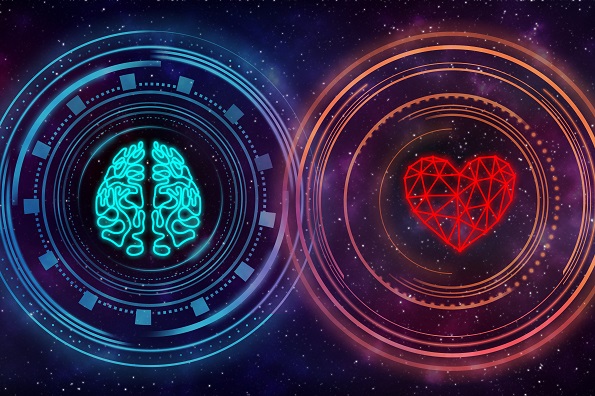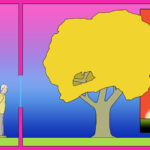In 2017, I watched in horror as my father began to suffer from dementia. To attempt to ease my way, I turned to Headspace. The app had limited content at the time and I completed most of the programs by 2018.
A home pull-up bar failed on August 6, 2022, and my head struck a tile floor. Months later, continuing to experience post-concussion symptoms, I began to work my way through evidence-informed protocols that might provide relief. Mindfulness meditation is one of the recommendations so I returned to use of Headspace.
Caveat #1: Some forms of mindfulness meditation, because they are assigned or prolonged or other factors, may be experienced as force, invoke a sense of helplessness, reactivate or exacerbate trauma symptoms, or have other negative effects. Consult a qualified health care professional before engaging in meditation, mindfulness meditation, or mindfulness practices.
Caveat #2: There is no right way to meditate or to practice mindfulness. Awareness can occur in any place, with arms, legs, or body in any position, whether eyes are closed, half-opened, or wide open. One may be seated in an upright position or hanging from a professionally-installed, outdoor pull-up bar. Discovering what helps a person become aware is, in itself, a part of becoming gently, openly aware of one’s own interiority.
I have no affiliations with Headspace or other resources mentioned on this page. These are my disclosures.
Why Headspace?
Logistics
- Emotion dysregulation is a primary mechanism by which much human suffering occurs. Mindfulness skills directly offer the opportunity to regulate alarm, distress, and stress and to ease one’s inner experience and physical discomfort. With one set of skills, a person may be able to address multiple challenges.
- Unless under real duress, troubling feelings – such as feeling depressed or anxious – are usually caused by dire thoughts. Becoming aware of one’s thoughts offers the opportunity to gently help oneself with them.
- Mindfulness-informed interventions are increasingly showing improved health outcomes for people experiencing physical and mental challenges.*
- Use of Headspace is empirically supported. Headspace is currently the most researched** meditation and mindfulness app. Fourteen clinical trials support its efficacy.
- The content is sound. I have meticulously schooled myself in research-backed therapy protocols. Although Headspace’s current library of content is vast and I have not listened to all of it, what I hear a) is in accord with cognitive theory-based protocols that have proven track records to improve mental health outcomes, b) offers spacious options rather than “you should” directives, c) is kind.
- When I need support, encouragement, and guidance at times when others aren’t available, the Headspace app is open 24-7. (Mobile apps for mental health is an idea I have been working on since 2013.)
Helpfulness
The primary reason people seek counseling is to feel better and do better. The primary mechanism by which people can feel better and do better is to become aware of what they’re feeling and thinking, what and how they’re thinking about what’s happening – reality as it is – and to help themselves with that. For initiating and practicing this process, Headspace offers guidance, support, and reinforcement.
Given current levels of despair, the large percentage of Americans who report feeling lonely on a regular basis, the global prevalence of anxiety and depression, and my own challenges, I began with these Headspace courses: Basics, Grief, and Managing Anxiety.
Why not other apps?
Popularity does not ensure safety or effectiveness. Marketing, influencer testimonials, or word-of-mouth referrals do not equal rigorous testing to determine if a method works for most people, most of the time, better than other things, and better than nothing at all. Do no harm to self or others is the prime directive with self-administered or other-administered care. Quackery exists and can be popularized, even by people with the best of intentions. I wish for top tier, research-backed, gold standard care for my one precious life. On all aspects of my health, I do literature reviews of research and consult credentialed, authoritative experts.
Recommended use of Headspace for clients
I recommend beginning with these courses, in order:
Basics > Basics 2 > Basics 3 > Managing Anxiety
Each course is 10 sessions. Each session is 11 minutes and 30 seconds long. In Basics 3, approximately session 5, individual awareness skills taught in the first sessions start weaving together in a way that reveals possibilities for the method’s broad use.
Daily completion of the sequence of Basics, Basics 2, and Basics 3 will result in a 30-day streak. If you need documentation of this streak, I recommend taking a screenshot of this data from your profile page.
The navigation to find courses is:
Dashboard > Explore > Meditate > Courses and Singles > Courses A-Z > Scroll through the list of alphabetized content to find Basics, Managing Anxiety, and other courses.
Favoriting courses with a heart icon makes the selected list available by clicking the empty heart icon on the dashboard.
After completing the daily course, you are invited to explore other content. Using the search feature with words describing feelings, thoughts, and situations can reveal options. Using the search term “expert guidance” reveals a list of 1-minute instructional videos that are very helpful.
I recommend listening to Andy Puddicombe read The Headspace Guide to Meditation and Mindfulness. Puddicombe did a wonderful 10-minute TED Talk in 2012: All it takes is 10 mindful minutes.
- Here’s a link to the first minute of the first session of Basics.
- Here is a link to the first minute of the first session of the Managing Anxiety course.
. . . . .
I have existential awareness of the complexity of the human condition. I have had my share of hardships. I neither minimize nor maximize my experiences, nor compare my experiences to those of others. I do, however, wish for a full, on-going sense of well-being.
This is part of the reason I have returned to using Headspace as part of my daily, self-care practices. My thoughts can be drawn longingly to what’s gone, what can’t be changed. or what might be ahead. This activates the emotion centers of my brain, often flooding my inner experience with alarm, distress, or the blues. Headspace helps coach me, then helps me practice shifting my attention from specific thoughts to spacious, broad consciousness. This returns me to use of, in synergy, my beautiful human brain’s emotion and cognitive centers. I can use my inner wisdom, skills, and creativity to help myself.
To gather case study data about my experience, I took several assessments prior to beginning use of Headspace, including the Flourishing Measure. I experienced positive change in all measures.
My experience with Headspace corroborates research findings: I feel better and do better.
. . . . .
*This is a brilliant definition of, and overview of, the research on mindfulness up to 2017. It expresses and summarizes beautifully my thinking on mindfulness – first exposure and experience in 2000. It offers sections of plain language for the layperson and more in-depth clinical exploration.
Mindfulness-Based Stress Reduction (MBSR), is an evidence-based protocol backed by decades of research, including brain imaging studies (2021), to assist with “Acting with awareness, Non-judgment, and Non-reactivity” (2022), improvements in stress, self-compassion, and social connectedness (2020), anxiety disorders (2023), post-traumatic stress disorder (2018), reduction in levels of anxiety, depression and stress (2022) – although results for depression are mixed (2022) – high-stress jobs such as nursing (2021) and teaching (2021), improving sleep quality in nurses (2021) and cancer survivors (2021), and with physical conditions such as boosting innate immunocompetence (2022), type 2 diabetes (2022), asthma (2022), cholesterol levels (2022), and hypertension (2021).
Loving-kindness meditation may be helpful with post-traumatic stress symptoms, including depression (2021).
**Excerpts from selected research articles that test Headspace, from earliest to latest:
“This trial suggests that short guided mindfulness meditations delivered via smartphone and practiced multiple times per week can improve outcomes related to work stress and well-being, with potentially lasting effects.”
– Bostock S, Crosswell AD, Prather AA, Steptoe A. Mindfulness on-the-go: Effects of a mindfulness meditation app on work stress and well-being. J Occup Health Psychol. 2019 Feb;24(1):127-138. doi: 10.1037/ocp0000118. Epub 2018 May 3. PMID: 29723001; PMCID: PMC6215525.
“Mindfulness meditation uniformly and independently improved the participants’ overall mental health.”
– Zollars I, Poirier TI, Pailden J. Effects of mindfulness meditation on mindfulness, mental well-being, and perceived stress. Curr Pharm Teach Learn. 2019 Oct;11(10):1022-1028. doi: 10.1016/j.cptl.2019.06.005. Epub 2019 Aug 7. PMID: 31685171.
“Results showed significant reductions (P<.01) in depression (Z=-3.36), anxiety (Z=-3.07), and stress (Z=-3.46) scores, representing reductions of 32%, 32%, and 47%.”
– Foley T, Lanzillotta-Rangeley J. Stress Reduction Through Mindfulness Meditation in Student Registered Nurse Anesthetists. AANA J. 2021 Aug;89(4):284-289. PMID: 34342565.
Of possible interest
Revisiting Values and Priorities in Challenging Times
Image: iStock
Last updated 11/16/2023
All content is for informational purposes only and is not a substitute for professional advice. Consult a qualified professional for personalized medical, health care, and professional advice.


